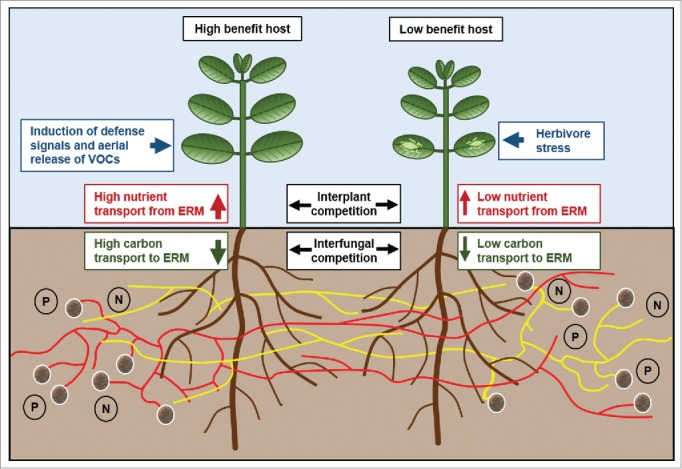Figure 1.

Function of common mycorrhizal networks (CMNs) in soil ecosystems. The roots of plants are connected by CMNs of single or multiple arbuscular mycorrhizal (AM) fungal morphospecies. Plants compete with their carbon resources for nutrients that become available for their CMNs. Plants can differ in their carbon transport to the CMNs and can represent low or high benefit hosts for the AM fungus. Low benefit host plants within a CMN could be for example seedlings that compete with adult plants, or adult plants that transfer less carbon to the CMN due to shading or herbivore damage. AM fungi can discriminate between low and high quality host plants and preferentially transfer resources to high quality hosts what can contribute to the inequalities among plants that have been observed in studies with CMNs. In addition, CMNs can serve as a conduit for the transfer of warning signals or of allelochemicals between plants within one CMN. Warning signals that are formed by donor plants for example in response to herbivore stress can lead in receiver plants to an induction of defense reactions and the release of volatile organic compounds from the leaves (VOCs). Directed transport of allelochemicals to specific plants via CMNs can facilitate the interplant competition and suppress the growth of plant competitors. Fungal CMNs compete for soil nutrients and compete with these nutrients for carbon resources from the different host plants within their CMN.
